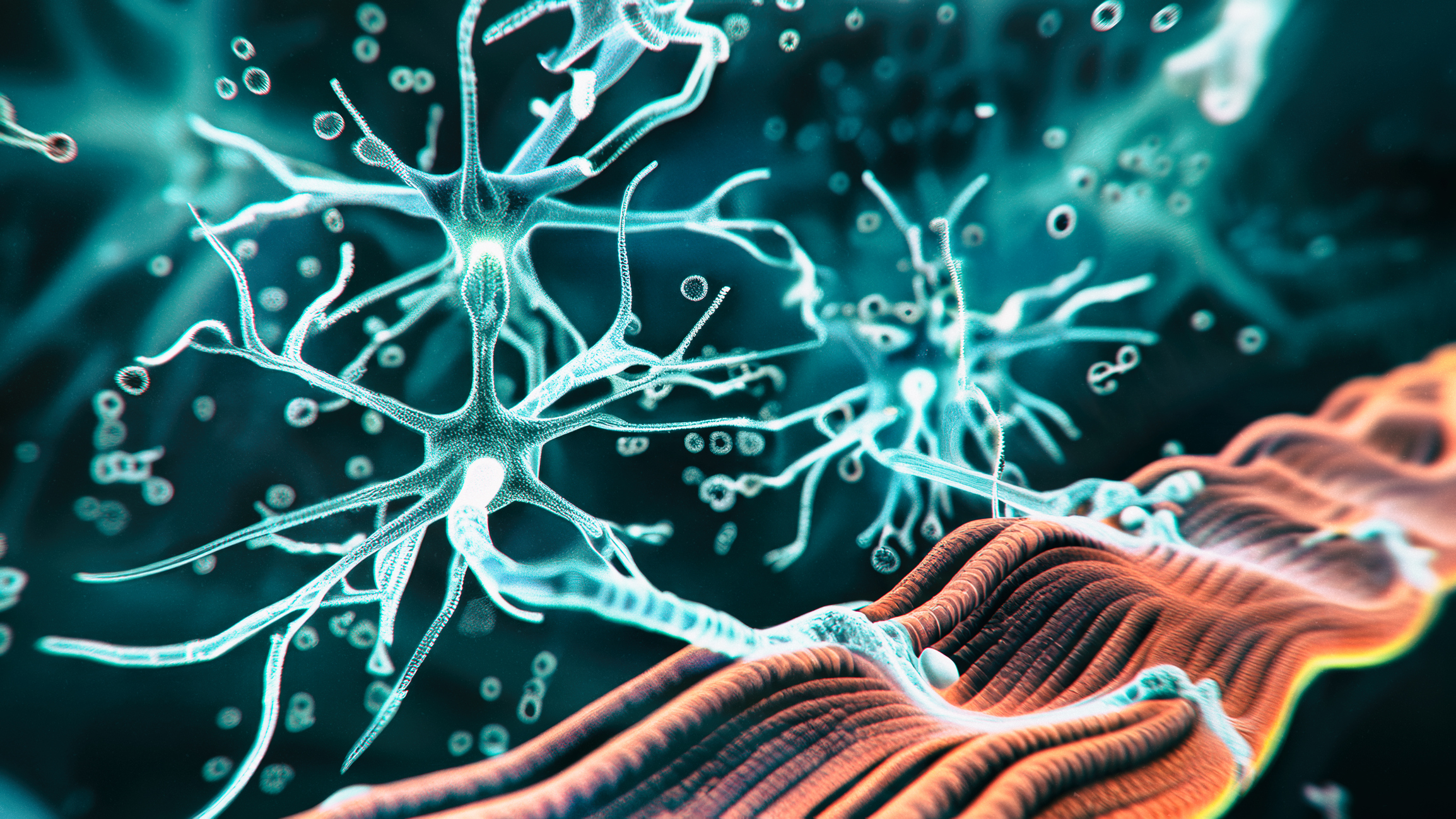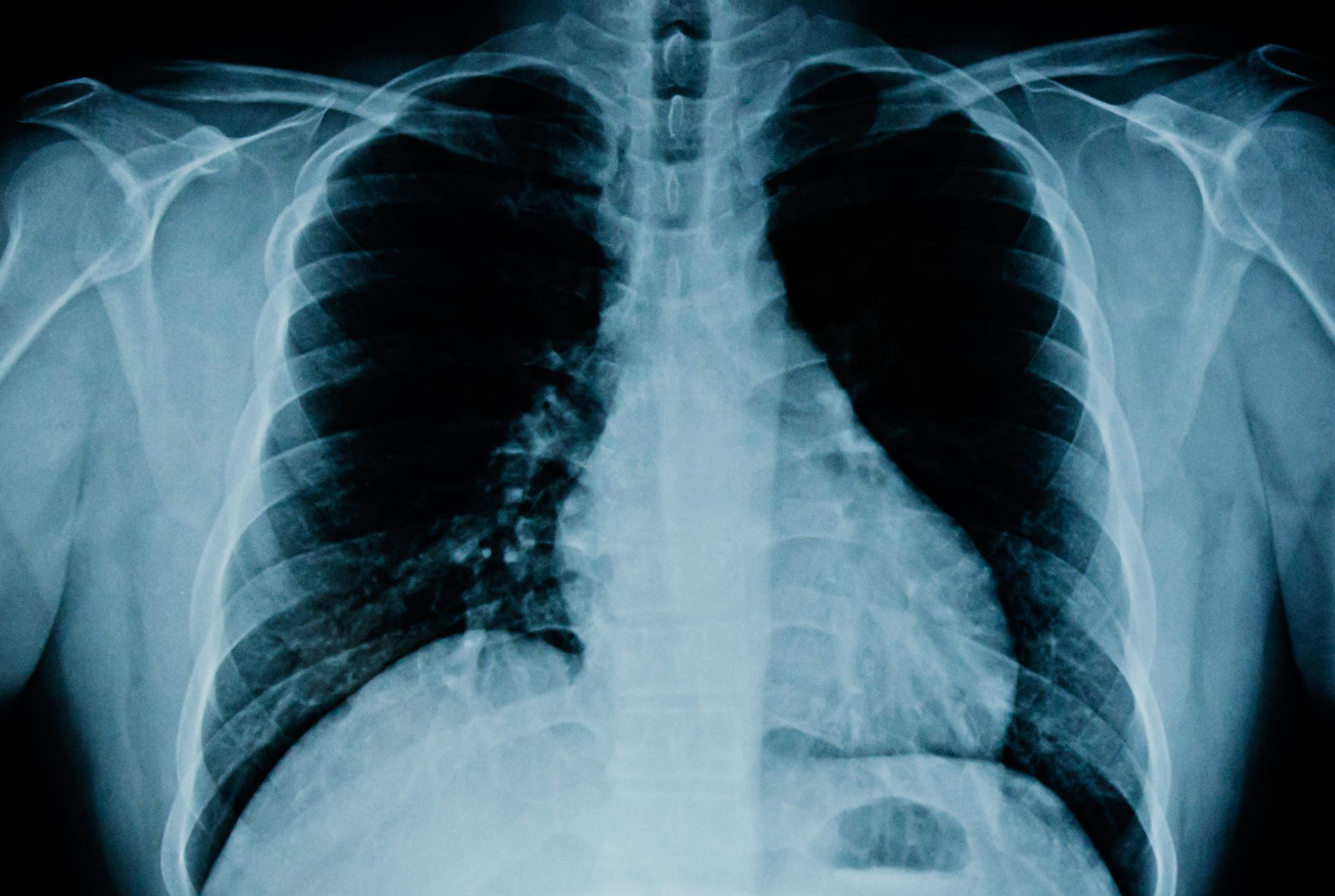A diet rich in energy and substrates is crucial for effective wound healing. Older people are at particularly high risk of wound healing disorders as a result of malnutrition, meaning that an increasing prevalence of chronic wound healing due to malnutrition can be expected in the future as a result of demographic change. Malnutrition is a risk factor that contributes to an unfavorable course of the disease regardless of the severity of the illness and significantly increases treatment costs in all age groups.
You can take the CME test in our learning platform after recommended review of the materials. Please click on the following button:
A diet rich in energy and substrates is crucial for effective wound healing. Older people are at particularly high risk of wound healing disorders as a result of malnutrition, meaning that an increasing prevalence of chronic wound healing due to malnutrition can be expected in the future as a result of demographic change. Malnutrition is a risk factor that contributes to an unfavorable course of the disease regardless of the severity of the illness and significantly increases treatment costs in all age groups. The consequential costs of malnutrition are estimated at several billion euros per year in Germany alone [1].
Energy and substrate requirements for wound healing
Immediately after an injury, blood components are released into the wound and form a clot that provides a matrix for the influx of inflammatory cells. This inflammatory phase is characterized by the migration of leukocytes into the wound. Neutrophil granulocytes primarily remove bacteria, followed by monocytes, which further differentiate into macrophages that exert early pro-inflammatory and late anti-inflammatory functions during the healing process. This is followed by the deposition of the newly synthesized fibrin matrix and the formation of granulation tissue, which is then replaced by collagen and scar tissue in the final stages of wound healing. The final proliferative phase of wound healing is characterized by re-epithelialization, neovascularization and extracellular matrix deposition.
In the treatment of chronic wounds, particularly pressure ulcers, nutritional status and ensuring sufficient nutrients are available are of particular importance. If there is a risk of malnutrition and manifest malnutrition, impaired and thus delayed wound healing develops, which is further modified by other factors. In addition to primary disorders caused by an underlying disease, which is vascular in over 70% of cases, secondary local disorders such as fibrin persistence or a migration defect of the epithelium impair healing. In addition to the age of the patient, cytotoxic environmental factors and medication are also considered to be tertiary, accompanying factors [2].
Wound healing regularly passes through four stages: coagulation, inflammation, proliferation and finally differentiation. Particularly during the inflammatory phase, the wound stress leads to serious metabolic changes. Catabolic hormones such as cortisol and catecholamines are upregulated, while the body’s fat metabolism is initially reduced. At the same time, the energy metabolism increases, which can also be recognized by an increased body temperature. The need for glucose increases, so that hepatic gluconeogenesis is the first to be strongly stimulated by the consumption of stored glycogen from the liver and later by the release of proteins from the skeletal muscles. During this phase, it is particularly important to get enough energy from food.
For proliferation and differentiation, sufficient substrates for repair are required in addition to energy for the purification processes: Carbohydrates and fats provide energy as macronutrients, while proteins are used to build structure. Vitamins and trace elements have a supporting effect as cofactors in DNA synthesis, among other things.
If there is a lack of energy-supplying or structurally relevant substrates during wound healing, the body draws on the available reserves in the “lean mass”, i.e. first on the hepatic glycogen, then on the muscles, and only later on the fatty tissue. These degradation processes produce ketones and glucose as energy suppliers and amino acids as structural building blocks. If the breakdown of the body’s own substances for energy production predominates, a protein-energy deficiency situation gradually develops. Under these metabolic conditions, wound healing is gradually throttled in favor of preserving the body’s own proteins. A critical decrease in lean mass leads to a shift in protein consumption for wound healing in favor of maintaining vital structures such as the respiratory muscles and immunoglobulins. Even a 20% reduction in lean mass leads to delayed healing, thinning of the skin and an increased risk of infection. A loss of 30% is associated with the spontaneous development of pressure ulcers and stagnant wound healing, which in turn is associated with a 50% mortality rate (Table 1) [2]. The causes of death are then infections, mostly pneumonia, which the body can no longer control due to the severe lack of defenses (decline in leukocytes and the necessary immunoglobulins).
Micronutrients and wound healing
Among the micronutrients, vitamin C (ascorbic acid) plays a central role in wound metabolism through its involvement in collagen biosynthesis as a cofactor in the hydroxylation of the amino acids lysine and proline and in the formation of stable collagen fibrils [3]. This biofactor promotes the formation and cross-linking of collagen, keeps it elastic and is important for the regeneration of tissue, to support wound healing and scar formation as well as for intact connective tissue. Vitamin C also has a positive effect on wound healing as a component of the body’s own antioxidant protection system and due to its involvement in lymphocyte and antibody synthesis to reduce inflammation [4]. A recent study on the anti-biofilm effects of vitamin C recommends that vitamin C should be routinely prescribed together with antibiotics for the treatment of bacterial infections in clinical settings [5]. A systematic review by Bechara et al. also found in 2022 that vitamin C supplementation improves healing outcomes, especially for pressure ulcers [6].
The fat-soluble vitamins A, D and E are other micronutrients that are of central importance for wound healing. Vitamin A is an essential micronutrient that occurs in various forms, including retinols, retinals and retinoic acids. It is a critical component of many important biological functions, including reproduction, embryological development, cellular differentiation, growth, immunity and vision. Vitamin A mainly acts via nuclear retinoic acid receptors, retinoid X receptors and peroxisome proliferator-activated receptors. Retinoids regulate the growth and differentiation of many cell types in the skin. Their deficiency, on the other hand, leads to abnormal epithelial keratinization. In wounded tissue, vitamin A activates epidermal turnover, increases the rate of re-epithelialization and restores the epithelial structure. Retinoids have the unique ability to reverse the inhibitory effect of anti-inflammatory steroids on wound healing. In addition to its role in the inflammatory phase of wound healing, retinoic acid increases the production of extracellular matrix components such as collagen type I and fibronectin, the proliferation of keratinocytes and fibroblasts and reduces the content of degrading matrix metalloproteinases [7].
Vitamin D helps to heal wounds by binding to the vitamin D receptor (VDR) via calcitriol. It regulates transcription in various target cells, stimulating the production of mitogenic growth factors via receptors such as platelet-derived growth factor (PDGF), epidermal growth factor receptors (EGFR) and keratinocyte growth factor receptor (KGFR). These effects are partly mediated by calcitriol-induced keratinocytes. The anti-inflammatory properties of vitamin D are thought to have an anti-proliferative effect on skin and mucous membrane regeneration with suppression of monocytes and inflammation mediated by Langerhans cells. It also reduces keratinocytes expressed by the pro-inflammatory cytokines IL-1α, IL-6 and IL-8. Calcitriol directly induces the expression of several pairs of antimicrobial peptides, including cathelicidin and defensin β2, and can recognize the microbial Toll-like receptor 2 (TLR2) and the cofactor of CD14. These collective activities have an immunoprotective effect against colonization with pathogenic organisms [8]. The intracellular effect of vitamin D almost always occurs together with the nuclear receptor of vitamin A. Vitamins A and D act like steroid hormones on cell metabolism.
In order to determine a vitamin D deficiency, it is useful to determine the 25(OH)D in the blood (storage form of vitamin D). The German Nutrition Society (DGE) and the National Institute of Health (NIH) state that a serum limit value of 50 nmol/l or 20 ng/ml is sufficient. However, everyday experience shows that this limit is rarely reached. According to Bischoff-Ferrari [9] and others, an adequate supply is only ensured from a value of 75 nmol/l or 30 ng/ml. In order to achieve these vitamin levels in the serum, the endogenous vitamin D production of the skin + UV radiation north of 50 degrees latitude must be regularly supported by an exogenous supply of e.g. 800-1000 IU vitamin D (25[OH]D) per day (Table 2) .
Vitamin E consists of two groups of compounds with physical-biochemical properties, tocopherols and tocotrienols, which differ slightly in their structure, with α-tocopherol being the strongest and most abundant form in vivo. Through its radical scavenging activity, vitamin E defends cell membranes and polyunsaturated lipids from ROS attacks by inducing the activation of various signal transduction pathways. In addition, the vitamin is important for maintaining the structural integrity of virtually all cells in the human body by influencing cell signaling. Vitamin E also modulates the expression of connective tissue growth factor (CTGF) and regulates gene expression and transcription, which helps protect wounds from infections such as methicillin-resistant Staphylococcus aureus (MRSA) [10].
Other micronutrients, including the trace elements zinc and selenium, are of crucial importance for the repair processes and may need to be substituted separately. Zinc is an important cofactor for the function of more than 10% of the proteins encoded by the human genome (~3000 proteins/enzymes). Zinc-dependent proteins play numerous indispensable roles in cells, such as transcription regulation, DNA repair, apoptosis, metabolic processing, regulation of the extracellular matrix and antioxidant defense [11]. As a central atom in numerous enzymes, selenium also plays a multidimensional role in the repair processes involved in wound healing.
Nutritional management to support wound healing
Maltodextrin, for example, a mixture of various short-chain sugars, is suitable for improving the carbohydrate supply in food and can be added to various dishes without significantly changing the taste.
In order to make the supply of dietary proteins for the body’s own protein synthesis as effective as possible, tasteless powder preparations that can be easily stirred into soups or milk dishes are suitable. The daily main meals should each contain at least 20 g of protein. This quantity results in a significant postprandial stimulation of protein synthesis, which can then utilize the released dipeptides and amino acids from the food directly in the organism.
When substituting vitamin C in the form of food supplements, it is important to pay attention to the appropriate galenics of the preparations. Only a slow release of ascorbic acid, e.g. from a capsule, ensures that the renal excretion threshold for vitamin C is not exceeded, thus guaranteeing sufficient availability in the body. If more than 100 mg of vitamin C powder is consumed in one portion, most of the micronutrient is excreted directly via the kidneys and is therefore lost to the body. The intake with a high-fat meal is crucial for the improved bioavailability of fat-soluble vitamins, as this is the only way the vitamins can be dissolved and absorbed intestinally.
Zinc substitution should primarily take place orally in the form of zinc-histidine tablets. The local application of zinc-containing preparations as topical agents for wound healing has only a limited effect on protein synthesis and regeneration of the epidermis. Rather, zinc-containing pastes in particular can impair skin respiration and should only be used for a short time and in a very targeted manner, especially to protect intact skin areas against maceration. Selenium can also be given in tablet form, often in combination with zinc. The daily requirement of micronutrients important for wound healing is shown in Table 3.
Age and inappetence as risk factors for wound healing
In 2019, the group led by Sieske et al. the possible relationship between inflammation, appetite and the amount of food eaten by elderly patients in hospital (n=200) [12]. The analysis showed that C-reactive protein (CRP) as an inflammatory marker is a main predictor of worsened appetite (p=0.003). Inflammation (p=0.011) and frailty (p=0.023) were found to be the main predictors of low food intake. Age in itself is also a risk factor for delayed wound healing. The general decline in food intake with age leads to a slowdown in all metabolic activities as well as wound healing [13]. One of the main causes is the age-related physiological change in central nervous appetite regulation: appetite-increasing hormones such as serotonin, noradrenaline and neuropeptide Y are downregulated, while the effect of counteracting hormones such as dopamine, leptin or cholecystokinin, which induce satiety, increases. The appetite-inhibiting inflammatory mediators TNF-α and IL-6 are particularly important in this context.
Studies have shown that the amount of micronutrients (iron, vitaminsB1,B2 and B6) decreases significantly as the amount of food energy consumed decreases. If food intake fell below 1500 kcal/day, 24% of men and 47% of women had deficits of >2/3 of the valid reference values [14].
Other risk factors for malnutrition, especially in old age, include psychosocial factors in addition to the numerous concomitant diseases, which are summarized in the DOMAP model (Determinations of Malnutrition in Aged Persons) [15]. This concept distinguishes between different levels of influencing factors:
- the central level (high demand, low nutrient intake, reduced bioavailability of nutrients),
- the second level, which directly influences the central mechanisms (e.g. chewing problems, hyperactivity, inappetence, diarrhea, restrictive diets),
- the third level, the factors of which underlie the 2nd level (e.g. tumor disease, loneliness, physical disability, cognitive impairment, heart failure),
- Finally, changes in age and general aspects that increase the risk of malnutrition (e.g. frailty, multi-medication, institutionalization, low education).
Diagnostics of malnutrition
One in four people receiving inpatient care in German hospitals is malnourished, as a study showed back in 2006 (n=1886) [16]. Older patients in the specialist areas of geriatrics (56.2%), oncology (37.6%) and gastroenterology (32.6%) were particularly affected. Due to this high prevalence, systematic screening for malnutrition on admission to hospital is urgently indicated, especially for patients over the age of 60. If malnutrition is suspected during a screening, a thorough nutritional assessment should follow and a nutrition plan should then be drawn up.
How is malnutrition defined? According to the German Society for Nutritional Medicine (DGEM), the term covers clinically relevant deficiency states that are caused either by reduced food intake, malabsorption and maldigestion, increased protein catabolism or inflammation [17]. A distinction is made between acute disease-specific or chronic malnutrition with inflammation and disease-specific malnutrition without inflammation. A third option is malnutrition without a direct link to illness. The Global Leadership Initiative on Malnutrition (GLIM) developed criteria for screening patients for malnutrition in 2018 [18]. On the one hand, phenotypic aspects such as weight loss, low BMI and reduced muscle mass are taken into account. On the other hand, etiological criteria such as a small amount of food, malassimilation and inflammation are recorded. If at least one point from both groups is fulfilled, malnutrition is present according to GLIM. This screening can be implemented quickly and easily and helps to identify people at risk. It should then be repeated at regular intervals.
Therapeutic measures for malnutrition and wound healing disorders
The European Pressure Ulcer Advisory Panel (EPUAP) guideline on pressure ulcer treatment recommends a daily energy intake of up to 40 kcal/kg body weight (bw) (grade IV pressure ulcers) and a daily protein intake of up to 2.0 g/kg bw (grade IV pressure ulcers) (Table 4), depending on the degree of pressure ulcer and if there is a risk of or already manifest malnutrition [19]. In addition to fortified main meals and snacks, patients should be offered high-calorie protein supplements containing as much arginine, zinc and antioxidants as possible. Finally, enteral and parenteral measures can also be used.
The S3 guideline published in 2023 on the local treatment of hard-to-heal and/or chronic wounds due to peripheral arterial occlusive disease, diabetes mellitus or chronic venous insufficiency also addressed the importance of nutrition as an adjuvant measure. The S3 guidelines “Clinical nutrition in surgery” and “Clinical nutrition in geriatrics” are available for more detailed recommendations. The latter is currently being updated. The expert standard “Nutrition management to safeguard and promote oral nutrition in nursing care” also exists for the nursing professions [20].
Take-Home-Messages
- In addition to causal and basic therapy, patients with chronic wounds also require supportive nutritional therapy. The increased energy requirement, but also the increased need for proteins, vitamins and trace elements must be taken into account.
- Whether there is a risk or already a manifest malnutrition in a patient with a wound healing disorder should be systematically checked by screening, possibly followed by a nutritional assessment, so that individual nutritional therapy can be initiated promptly.
- Nutritional therapy begins with improving oral food intake through snacks and targeted fortification of meals with macro and micronutrients. Finally, enteral and parenteral nutrition measures can also be used.
Literature:
- Frejer K, Tan SS, Koopmmanschap MA, et al.: The economic costs of disease related malnutrition. Clin Nutrition 2013; 32: 136–141.
- Demling RH: Nutrition, Anabolism, and the Wound Healing Process: An Overview. J Plast Surg 2009; 9: 65–94.
- Moores J: Vitamin C: a wound healing perspective. Br J Community Nurs 2013; 6: 8–11.
- Schols JM, et al.: Nutritional support in the treatment and prevention of pressure ulcers: an overview of studies with an arginine enriched oral nutritional supplement. J Tissue Viability 2009; 18(3): 72–79.
- Abdelraheem WM, et al.: Assessment of Antibacterial and Anti-biofilm Effects of Vitamin C Against Pseudomonas aeruginosa Clinical Isolates. Front Microbiol 2020; 13: 847449; doi: 10.3389/fmicb.2022.847449.
- Bechara N, et al: A Systematic Review on the Role of Vitamin C in Tissue Healing. Antioxidants 2022; 11: 1605; doi: 10.3390/antiox11081605.
- Polcz ME, et al: The Role of Vitamin A in Wound Healing. Nutr Clin Pract 2019; 34(5): 695-700; doi: 10.1002/ncp.10376.
- Siregar FD, et al: The Role of Vitamin D on the Wound Healing Process: A Case Series. International Medical Case Reports Journal 2023: 16: 227-232.
- Bischoff-Ferrari HA, et al: Estimation of optimal serum concentrations of 25-hydroxyvitamin D for multiple health outcomes. Am J Clin Nutr 2006; 84(1): 18-28.
- Hobson R.: Vitamin E and wound healing: an evidence-based review. Int Wound J 2016; 13: 331-335.
- Lin PH, et al: Zinc in wound healing modulation. Nutrients 2018; 10: 16; doi: 10.3390/nu10010016.
- Sieske L, et al: Inflammation, appetite and food intake in older hospitalized patients. Nutrients 2019; 11(9): 1986.
- Robinson SM, et al: Does nutrition play a role in the prevention and management of sarcopenia? Clin Nutr 2018; 37(4): 1121-1132.
- De Groot CP, van den Broek T, van Staveren W: Energy intake and micronutrient intake in elderly Europeans: seeking the minimum requirement in the SENECA study. Age and ageing 1999; 28(5): 469–474.
- Volkert D, Kiesswetter E, Visser M: DoMAP – ein Determinanten-Modell zur Entstehung von Mangelernährung im Alter. ErnährungsUmschau 2020; 67: M530-M535; doi: 10.4455/eu.2020.047.
- Pirlich M, et al: The German hospital malnutrition study. Clin Nutr 2006; 25(4): 563-572.
- Valentini L, et al: DGEM terminology in clinical nutrition. Aktuel Ernahrungsmed 2013; 38: 97-111.
- Cederholm T, et al: GLIM criteria for the diagnosis of malnutrition – a consensus report from the Global Clinical Nutrition Community. Clin Nutr 2019; 38(1): 1-9.
- European Pressure Ulcer Advisory Panel, National Pressure Injury Advisory Panel and Pan Pacific Pressure Injury Alliance: Prevention and Treatment of Pressure Ulcers/Injuries: Quick Reference Guide. Emily Haesler (Ed.). EPUAP/NPIAP/PPPIA 2019.
- Expert standard “Nutrition management to ensure and promote oral nutrition in nursing care – 1st update 2017”. Publication series of the German Network for Quality Development in Nursing. Osnabrück; ISBN: 978-3-00-025800-8.
- Veitl V: Prophylaxe und Therapie der Wundheilungsstörung – Bedeutung der Ernährung 2009; 41–51.
- Rosen C, Abrams SA, Aloia JF, et al.: IOM Committee Members Respond to Endocrine Society Vitamin D Guideline. Clin Endocrinol Metab 2012; 97(4): 1146–1152; doi: 10.1210/jc.2011-2218.
- Empfehlungen für die Vitamin-Versorgung für gesunde Erwachsene (Stand: Juni 2021) (verbraucherzentrale.de); letzter Zugriff: 12.05.2024.
- www.verbraucherzentrale.de/sites/default/files/2021-08/empfehlungen_mineralstoffe_bf.pdf; last accessed: 12.05.2024.
HAUSARZT PRAXIS 2024; 19(6): 12–17
















